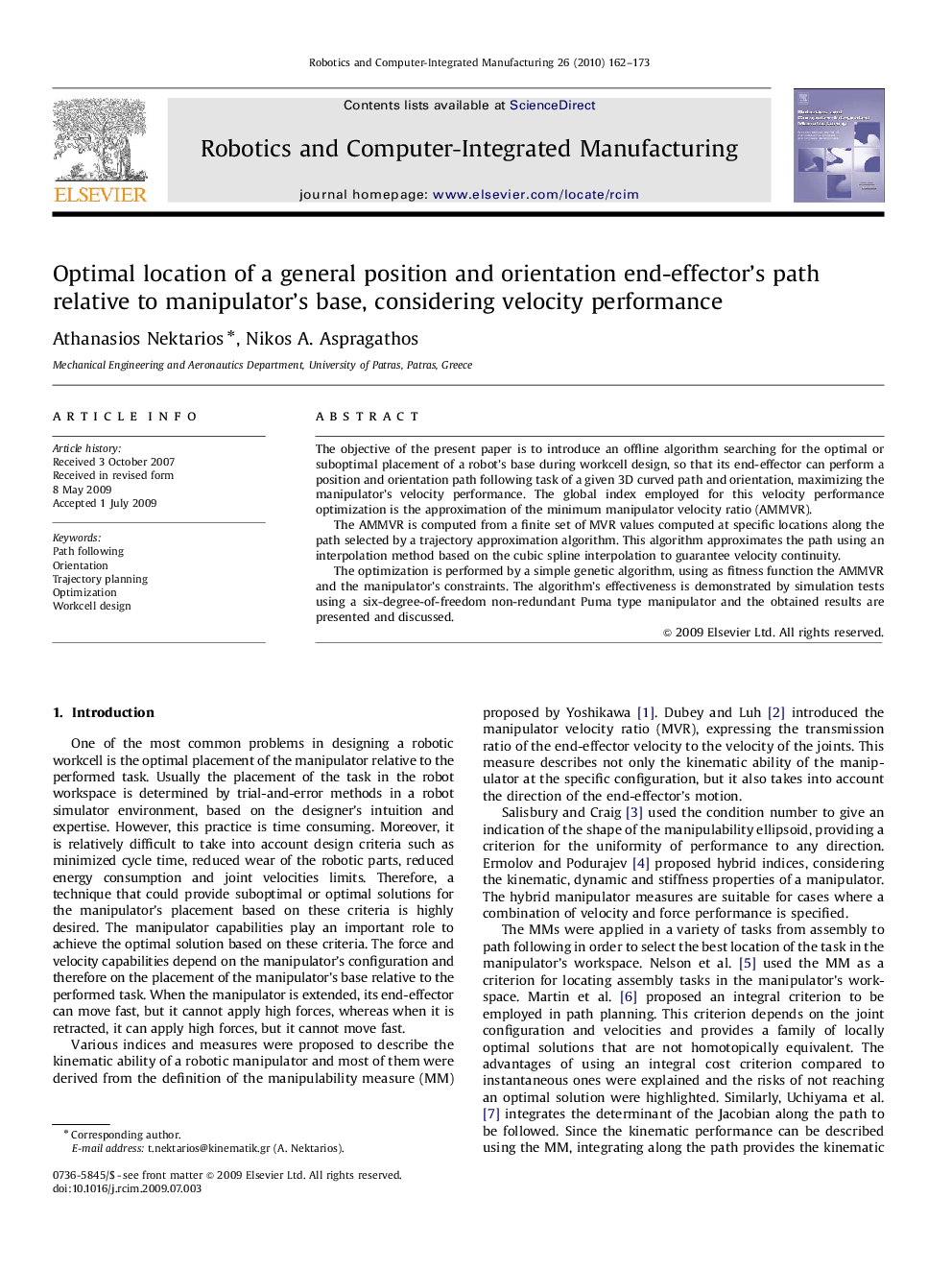| Article ID | Journal | Published Year | Pages | File Type |
|---|---|---|---|---|
| 414102 | Robotics and Computer-Integrated Manufacturing | 2010 | 12 Pages |
The objective of the present paper is to introduce an offline algorithm searching for the optimal or suboptimal placement of a robot's base during workcell design, so that its end-effector can perform a position and orientation path following task of a given 3D curved path and orientation, maximizing the manipulator's velocity performance. The global index employed for this velocity performance optimization is the approximation of the minimum manipulator velocity ratio (AMMVR).The AMMVR is computed from a finite set of MVR values computed at specific locations along the path selected by a trajectory approximation algorithm. This algorithm approximates the path using an interpolation method based on the cubic spline interpolation to guarantee velocity continuity.The optimization is performed by a simple genetic algorithm, using as fitness function the AMMVR and the manipulator's constraints. The algorithm's effectiveness is demonstrated by simulation tests using a six-degree-of-freedom non-redundant Puma type manipulator and the obtained results are presented and discussed.
